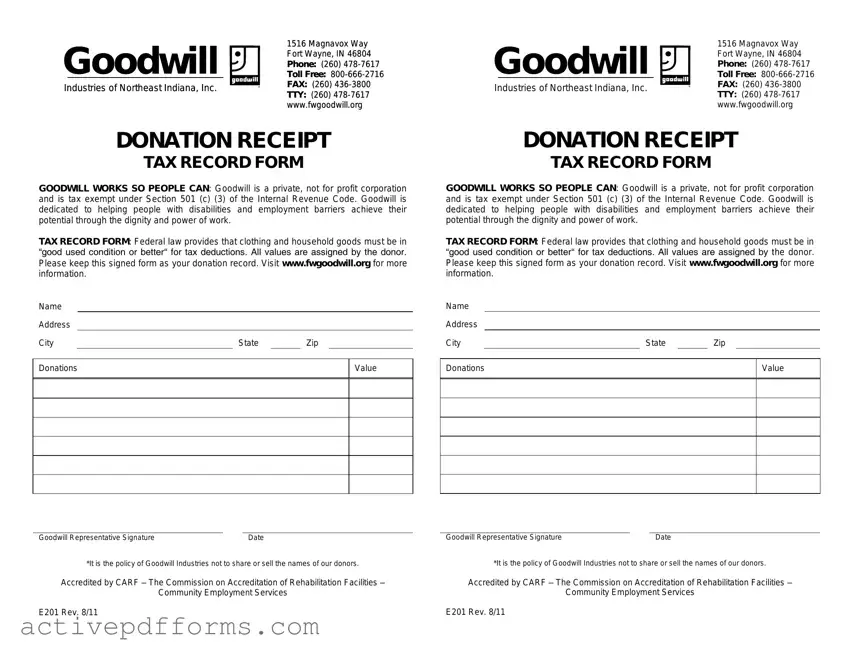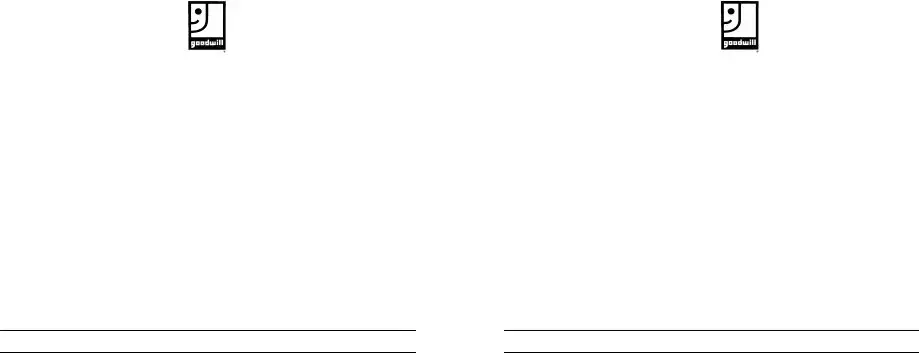How to Fill Out Goodwill donation receipt
When you donate items to Goodwill, you're not only clearing out your space but also helping fund job training and employment services for people in your community. To acknowledge your contribution, Goodwill provides a donation receipt form. This document is crucial for keeping a record of your donation, which can be handy, especially when tax season rolls around. Here's how to fill out the Goodwill donation receipt form, step by step, to ensure you get it right the first time:
- Start by writing your name and address in the designated area at the top of the form. This identifies you as the donor.
- Enter the date of the donation next to your name and address. This helps both you and Goodwill keep accurate records of when the donation was made.
- Describe the items you are donating in the section provided. Be as specific as possible, listing each item separately. If you're donating clothes, for example, note the type and quantity, like "2 pairs of men's jeans."
- If you know the fair market value of the items you're donating, list this next to each item description. If not, Goodwill has resources to help you estimate these values.
- Count the total number of items donated and write this number in the designated spot. This gives a quick overview of the size of your donation.
- Add up the total fair market value of all your items and put this amount in the space provided. This total will be important for tax purposes.
- Read through the declaration that certifies your donation, found at the bottom of the form. By signing your name, you're affirming that the information you've provided is accurate and that the items you've donated were in good condition, suitable for their intended purpose.
- Finally, if a Goodwill employee or volunteer assists you with your donation, they may need to sign the form as well, acknowledging receipt of your donation. Make sure they fill in their part if it's required.
Once completed, ensure you retain a copy of this form for your records. Goodwill will provide you with a copy as a proof of your donation, which you should keep safe until it's time to prepare your taxes. Remember, preserving these receipts can be beneficial in documenting charitable contributions, which may qualify you for a potential deduction on your income tax return. Now that you know how to accurately fill out the Goodwill donation receipt form, you can confidently donate and support your local community while possibly benefiting your financial situation come tax time.

